UV Index 1
The UV Index is a measurement developed by the World Health Organization (WHO), the World Meteorological Organization (WMO), and other international organizations to help individuals understand the strength of ultraviolet (UV) radiation from the sun and its potential effects on human health.
UV Index 1 represents a low level of UV radiation intensity. It indicates that the UV rays from the sun are relatively weak. This level is commonly observed during early morning and late afternoon when the sun is at a lower angle in the sky, such as during sunrise or sunset. At this time, the sun's rays have to pass through a thicker layer of the Earth's atmosphere, which results in a reduction in UV intensity.
Key Characteristics of UV Index 1:
- UV Intensity: UV Index 1 signifies that the UV radiation is relatively mild. The intensity of UV rays is directly related to the angle of the sun, with lower angles leading to weaker UV radiation.
- Sun Protection: While UV Index 1 represents a low risk of sunburn, it is still important to protect your skin and eyes from UV radiation. It is recommended to follow basic sun safety measures even at this level. These include wearing protective clothing, using sunscreen with at least SPF 15 or higher, wearing sunglasses that block UV rays, and seeking shade when the sun is at its strongest.
- Vulnerability: People with fair skin that burns easily may still experience some degree of sunburn or skin damage, even at UV Index 1. Additionally, individuals with certain medical conditions or medications that make their skin more sensitive to UV radiation should exercise caution and take appropriate measures to minimize sun exposure.
- Geographic and Environmental Factors: The UV Index can vary depending on the geographical location, altitude, and prevailing weather conditions. It is typically higher in areas closer to the equator, at higher altitudes, and during clear, sunny days.
- Daily Variation: The UV Index changes throughout the day. It is generally lowest in the early morning and late afternoon when the sun is at its lowest point in the sky. UV intensity increases as the sun gets higher in the sky, reaching its peak around midday.
Understanding the UV Index helps individuals make informed decisions about sun protection. By checking the UV Index forecast for your location and planning outdoor activities accordingly, you can reduce the risk of sunburn, premature aging of the skin, and the development of skin cancer caused by overexposure to UV radiation.
It's worth noting that the UV Index scale ranges from 0 to 11 or higher, with higher values indicating greater UV intensity and increased risk of sunburn and skin damage. So, while UV Index 1 represents a relatively low level of UV radiation, it's still essential to practice sun safety measures and monitor the UV Index regularly to protect yourself from the harmful effects of the sun's rays.
 UV Index 1
UV Index 1
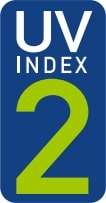 UV Index 2
UV Index 2
 UV Index 3
UV Index 3
 UV Index 4
UV Index 4
 UV Index 5
UV Index 5
 UV Index 6
UV Index 6
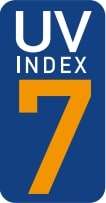 UV Index 7
UV Index 7
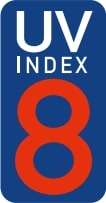 UV Index 8
UV Index 8
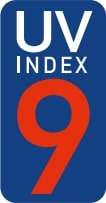 UV Index 9
UV Index 9
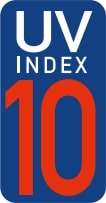 UV Index 10
UV Index 10
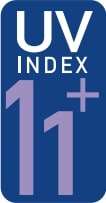 UV Index 11+
UV Index 11+
It's easy to find your local UV index forecast. Enter your city and state above and hit the "Find Forecast" button.